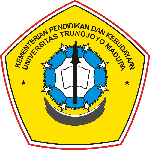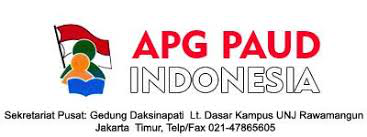Penerapan Metode Bercerita untuk Meningkatkan Kreativitas pada Siswa TK Kelompok B
Abstract
Childhood, especially at an early age is often reffered to as the golden age the sensitive period in receiving various stimulation. Early childhood education for the formal education of kindergarten. However, in reality the conditions are too oriented academic kindergarten education where learning is more emphasis on writing, arithmetic and reading the familiar linear thinking, logical, orderly and convergent, divergent thinking so unaccustomed. Whereas divergent thinking pattern is a pattern of thinking that trying to find alternative thinking (creative) to obtain a wide range of solutions to problems. Creativity takes the child in the process of life, especially in the resolution of difficulties, the discovery of new works or new solutions. Based on the problems that the researchers used storytelling as an intervention method that is used to increase the creativity of children. The subjects were students in kindergarten group B 5-6 years old. Evaluation from of pre-test and post-test tell the story of an image. The difference in scores will be analyzed using statistical techniques paired sample t test.result of statistical analysis, know t =-2,990 and p =0,015, in this case p < 0,05 indicates a significant difference that there is an increase in the score before the post-intervention. The average score before intervention was 14,10 and the average score after the intervention was 18,30, so that the increase is 4,20. Thus, we can conclude that storytelling can increase a child’s creativity TK group B.
Keywords
Full Text:
PDFReferences
Asfandiyar, A.Y. (2007). Cara Pintar Mendongeng. Jakarta : Mizan Media Utama
Departemen Pendidikan Nasional. (2007). Kerangka Dasar Pendidikan Anak Usia Dini. Jakarta: Direktorat Pendidikan Anak Usia Dini, Direktorat Pembinaan TK dan SD, Universitas Negeri Jakarta, www.1001kata.wordpress.com
Eckhoff, A.; & Urbach, J. (2008). Understanding Imaginative Thinking During Childhood: Sociocultural Conceptions of Creativity and Imaginative Thought. Early Education Journal, Vol.36. hal 179-185
Hawadi.; Akbar.; & Reni. (2001). Psikologi Perkembangan Anak Mengenal Sifat dan Kemampuan Anak. Jakarta: PT Grasindo
Jamaris, M. (2006). Perkembangan dan Perkembangan Anak Usia Taman Kanak - Kanak; Pedoman bagi orang tua dan guru. Jakarta : PT. Grasindo.
Moeslichatoen. (2004). Metode Pengajaran di Taman Kanak-kanak. Jakarta: Rineka Cipta.
Munandar, U. (2004). Pengembangan Kreativitas Anak Berbakat. Jakarta: Renika Cipta
Munandar, U. (2009). Pengembangan Kreativitas Anak Berbakat. Jakarta: Renika Cipta
Musfiroh, T. (2008). Memilih, Menyusun dan Menyajikan Cerita untuk Anak Usia Dini. Yogyakarta: Tiara Wacana
Pamilu, A.( 2007). Mengembangaan Kreativitas dan Kecerdasan Anak. Yogyakarta: Cipta Media.
Rachmawati, Y.; & Kurniati E. (2010). Strategi Pengembangan Kreativitas Pada Anak Usia Taman Kanak-Kanak. Jakarta: Kencana
Rofiq, A. (2008). Upaya menumbuhkan Kreativitas Anak. (Online), (http://ahmadrofiq.com , diakses pada tanggal 25 Mei 2011)
Sukadji, S. (2000). Psikologi Pendidikan dan Psikologi Sekolah. Depok: L.P.S.P3 Fakultas Psikologi Universitas Indonesia
Santrock, J.W.(2002). Life-span Development Perkembangan masa Hidup. Jakarta: Erlangga
Santrock, J.W. (2009). Psikologi Pendidikan. Jakarta : Penerbit Erlangga
DOI: https://doi.org/10.21107/pgpaudtrunojoyo.v1i1.3549
Refbacks
- There are currently no refbacks.
Copyright (c) 2014 Ratih Widyastuti Permatasari

This work is licensed under a Creative Commons Attribution 4.0 International License.
Diterbitkan oleh:

Program Studi Pendidikan Guru Pendidikan Anak Usia Dini, Fakultas Ilmu Pendidikan
Universitas Trunojoyo Madura.
Jl. Raya Telang PO BOX 2 Kamal, Bangkalan, Jawa Timur 69162
Telp. (031)3014239/ Fax. (031)3011506









